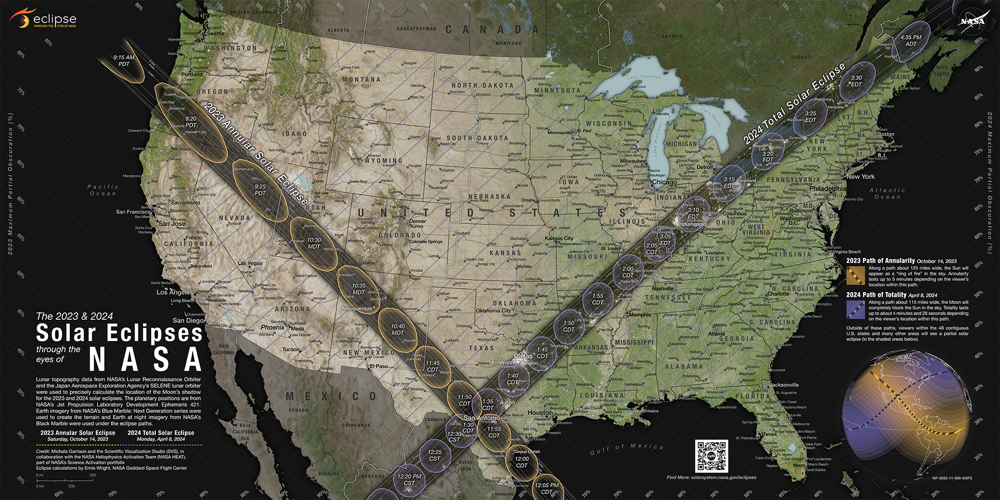
Steven Seppala, center left, and Mariela Corella, use safety glasses to watch a partial solar eclipse at Flandrau Science Center and Planetarium on the University of Arizona Mall on Aug. 21, 2017.
The shadow of the moon will miss us by about 250 miles, but Saturday’s partial solar eclipse is still worth a watch party at the Flandrau Science Center and Planetarium.
“We’re not going to get a ring of fire here in Tucson, but we will see really good coverage,” said Nick Letson, marketing and communications manager for the planetarium.
Flandrau is hosting a gathering on the University of Arizona Mall in front of the planetarium starting at 8 a.m.
The eclipse gets underway at 8:12 a.m. and peaks here at 9:33 a.m., when roughly 83% of the sun will be blocked by the moon.
Special solar telescopes will be set up outside the planetarium, and the theater inside will project the eclipse for anyone who wants to watch the show in air-conditioned comfort.
Saturday’s event is free, but you might want to bring along some money anyway. Flandrau will be selling certified solar viewing glasses for $5 while supplies last. The planetarium is also offering discounted admission to its science exhibits for $5 throughout the day.
During an eclipse, it is never safe to look directly at the sun without specialized eye protection designed for solar viewing.
This is an annular eclipse, so the moon won’t completely blot out the sun, even in places directly in its path.
The moon’s 125-mile-wide shadow will move diagonally across the western U.S. from Oregon’s Central Coast to the Gulf Coast of Texas at Corpus Christi. The Four Corners region is the only part of Arizona where the so-called ring of fire will be visible.
This will be the first solar eclipse visible from Tucson since the Aug. 21, 2017, total eclipse, when the moon’s shadow crossed the continental U.S. from coast to coast.
The next total eclipse over North America will happen on April 8, 2024, along a path from Mazatlan, Mexico, to Maine. Several major U.S. cities will have front row seats for that celestial event, including Dallas, Indianapolis, Cleveland and Buffalo.

A NASA map shows the paths of two upcoming solar eclipses over North America: Saturday’s annular eclipse, which will partially obscure the sun, and the April 8, 2024, total eclipse, which will cause the sky to go dark through a swath of Mexico and the U.S. from Texas to Maine.
In Tucson, though, only about 75% of the sun will be covered by the moon — not enough for total darkness, but more than enough to warrant another planetarium watch party next year, Letson said.
The Old Pueblo was still pretty young the last time it found itself directly in the path of a solar eclipse: an annular event on Aug. 27, 1821.
The closest Tucson has come in modern times was on May 10, 1994, when an annular eclipse crossed the southeastern corner of the state.
Saturday’s eclipse ends at 11:05 a.m. Tucson time, but the solar-themed shows at the planetarium will continue throughout the day.
Then Flandrau will close out the festivities with the most planetarium thing imaginable: a laser-light show set to Pink Floyd’s “Dark Side of the Moon.”
Tickets to the hour-long show are $18.95 each, with showings scheduled for 7 p.m. and 8:30 p.m.
“We figured you can’t have a solar eclipse without the moon,” Letson said. “We’re going to keep the celebration going into the night.”
Tips from NASA on how to safely view Saturday's annular solar eclipse, which should not be looked at with your naked eyes, through sunglasses or using binoculars or other magnification devices.





